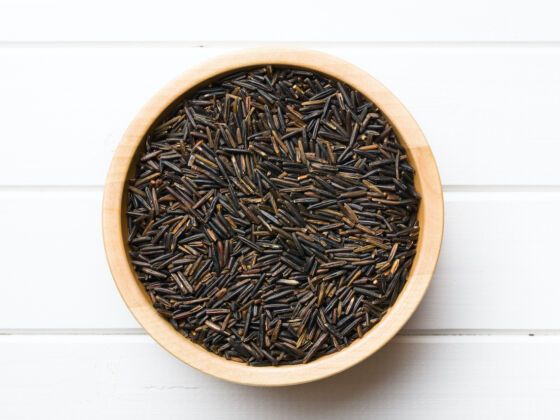Every year as the summer fades into fall, Minnesota embraces wild rice. People have harvested the grain from the region’s lakes for more than 2,000 years. Today, it’s a mainstay on dinner tables in the Upper Midwest and there are a number of companies that sell imitation “wild rice” across the country. But for the real stuff, you have to go north.

Why You Have to Travel to Minnesota to Find North America’s True Wild Rice
Wild rice has been the official state grain of Minnesota since 1977. The state once produced nearly all of the wild rice eaten in the world, and it’s still a major production region. It’s clear that wild rice is important in the region, whether you’re talking about its prominent place on the Midwest Thanksgiving table or its connection to the people who have embraced the grain for generations.
The majority of wild rice grows in central and north-central Minnesota. According to the state, it can be found in more than 1,200 lakes that span across 55 of Minnesota’s 87 counties. It takes a special set of conditions to grow — water levels between half a foot and 3 feet deep, for one, as well as three to four months of nearly freezing water for the seeds to germinate. It is, as the name implies, wild and not cultivated, but it’s not technically a rice. In the most basic sense, wild rice is a type of grass rather than a type of rice, and the rice-like seeds are one of two primary grains native to North America.
Wild rice plays an important role culturally as well. The grain was at the center of life for the Anishinaabe, a group of Indigenous peoples in the Great Lakes region linked by culture and the Anishinaabemowin language, that includes the Ojibwe, Potawatomi, and Odawa, among others. The Ojibwe call wild rice manoomin, which means good berry. In their origin story, the creator told the people to move west until they arrived “where food grows on the water.” That water referred to the lakes of what is now known as the Upper Midwest.
“Wild rice is part of our prophecy, our process of being human, our process of being Anishinaabe,” Andy Favorite, White Earth’s tribal historian, told Minnesota government researchers in 2008. “We are here because of wild rice. We are living a prophecy fulfilled.”
The Anishinaabe introduced wild rice to European fur traders early on in the colonial exploration of North America. They appreciated the highly nutritious grain, with the English calling it Indian rice and the French calling it folle avoine. It also went by a number of other names, like water oats and marsh oats.
Despite its local popularity, wild rice remained a regional and wild grain up until the 1950s, when James and Gerald Godward flooded paddies and cultivated the grasses for the ensuing ten years. By 1965, Uncle Ben’s (now Ben’s Original) had invested in the effort to domesticate wild rice and the company mixed wild rice with long-grain rice. This cultivated variant helped make the rice more affordable as well as more popular — the paddy-grown rice is typically what makes it into Thanksgiving recipes across the country. However, this cultivated variety lacks the connections to culture and the land that makes wild rice special. Ari Weinzweig classified the “imposter” cultivated wild rice in The Atlantic in 2010 as “industrial-agro-culinary silliness without the soul.”
The wild rice that has so long sustained people in the northern reaches of what is now the United States faces many threats. Dams and water channels detract from the plant’s natural habitat, while pollution spoils the water and soil. Climate change could make the wild rice untenable in its current state. Losing wild rice would have an impact on the cultures that have long relied on it, but also on the environment — nearly 20 species that the Minnesota Department of Natural Resources classifies as “species of greatest conservation need” depend on wild rice for shelter or food.
For now, wild rice is still more than just a mealtime staple. You can see the home of true wild rice first hand if you travel north during harvest season, which runs from August 15 to September 30. You need a license unless you’re a member of an Indigenous tribe (it costs $30 for a day license for non-residents, and $15 for Minnesotans), and you’ll also need to brush up on the many rules and regulations. Boats must be 18 feet long or shorter, and the push poles used to move the boats are required to have a forked end. Mechanical harvesting is all but banned.
To harvest, understand, and enjoy wild rice is to connect to the traditions and foodways of North America that existed long before it was known as America.